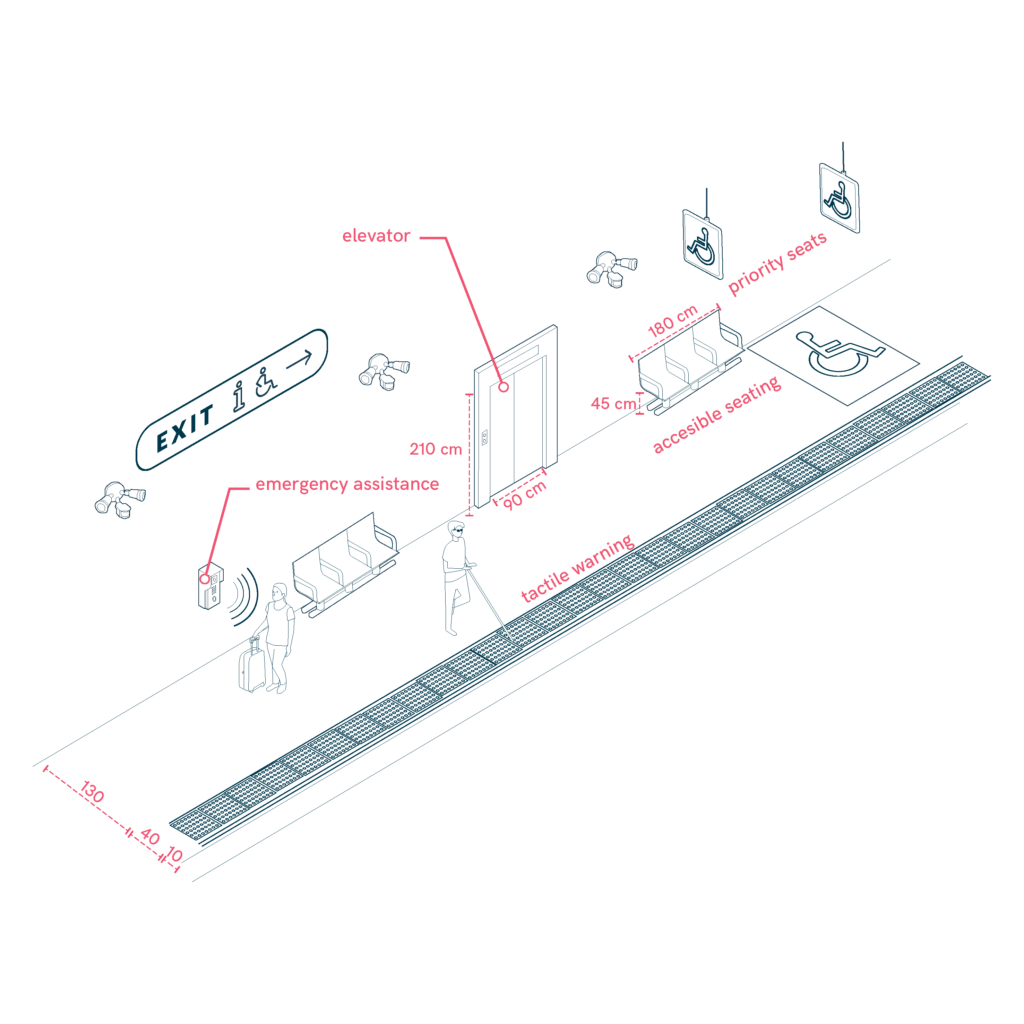Railway and Metro Infrastructure
Railways and metro stations should be universally accessible, removing barriers for people with disabilities through careful design and upgrades. This includes platforms, entrances, and onboard facilities for inclusive travel.

- Equip stations with elevators, ramps, or bridgeplates for easy access to platforms.
- Install tactile warning strips along platform edges and ensure sufficient lighting for visibility.
- Provide accessible seating along platforms and station halls with space for mobility aids.
- Use real-time information systems that combine visual screens and audio to support all passengers.
- Ensure staffed assistance counters or intercoms for passengers requiring additional help.
- Position at least two priority seats near doors in metro or train carriages for people with disabilities, with foldable armrests if necessary.
Sources
- https://accessible-eu-centre.ec.europa.eu/content-corner/digital-library/en-172102021-accessibility-and-usability-built-environment-functional-requirements_en
- https://www.iso.org/standard/71860.html
- https://www.t-l.ch/collectivites/guide-des-amenagements-pour-les-transports-publics-routiers-tl/
- https://www.leitfadenbarrierefreiesbauen.de/fileadmin/downloads/archiv/barrierefreies_bauen_leitfaden_en_bf_version2.pdf
- https://www.vitoria-gasteiz.org/http/wb021/contenidosEstaticos/especial/cea/20190917/Avance_PMSEP_2020_2030.pdf
- https://www.punt6.org/es/books/espacios-para-la-vida-cotidiana/
- Carers
- Children
- Cognitive
- Cognitive abilities
- Decolonial perspective
- Digital
- Digital barrier
- Enviroment
- Environmental
- Gender and generations
- Gender perspective
- Hearing impairment
- Low-education
- Low-income
- Older people
- Other
- Physical abilities and features
- Sensory and Physical
- Socioeconomic
- Visual impairment